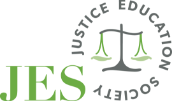Introduction
Justice Education Society’s (JES) vision is to seek Justice for All. We strive for a world free of prejudice, bias, discrimination, violence and harmful practices in which everyone’s rights are respected, everyone is treated fairly and everyone has equal access to justice. We believe that the empowerment of persons of all genders, who face intersecting forms of marginalization and exclusion, is fundamental to achieving gender equality and social justice, and for contributing to the progress and development of a stronger, more peaceful, and sustainable world.
We recognize that to achieve our mission to empower people to access and deliver justice in Canada and globally, and to contribute to the Sustainable Development Goals, considerations of gender, diversity, and inclusion must be front and center in all that we do. Gender equality, diversity and inclusion are an intrinsic part of who we are, driving how we lead our organization, how we work, how we deliver our services and programs, and how we contribute to our communities at the regional, national and international levels.
Application
This Policy applies to JES, its Board and its committees, employees, contractors, consultants and volunteers.
Statement
Our goal is to create an institutional foundation that embraces inclusive and equitable principles, exemplified by a diverse and representative workforce, allowing us to celebrate and foster a culture that provides a flexible, engaging and empowering work environment. We believe this is achieved through:
- building and leveraging diverse, complementary capabilities within and between teams;
- engaging, mobilizing and retaining the best available talent, with a focus on attracting applicants with diverse socio-cultural identities, and providing them with ongoing learning opportunities;
- encouraging and utilizing diverse ways of thinking to create the best solutions to build individual, community and stakeholder capacities; and
- by delivering our services in a collaborative manner, building linkages and partnerships across socio-economic and cultural barriers and differences.
These actions will give JES a competitive advantage through productivity, innovation, agility and accountability for sustainable performance and equitable growth. These actions will also allow JES to deliver on our vision, mission and commitment, and to best support the diverse individuals, communities and stakeholders that we serve.
Our Commitment
To achieve our goal, JES will:
- Conduct regular gender, diversity and inclusion audits with a focus on data, policies, processes and culture in order to identify areas of strength, improvement, opportunities and challenges.
- Develop and implement a strategy and action plan to address systemic or cultural barriers that hinder the attraction, recruitment, retention and progression of diverse talent.
- Analyze and monitor the gender and diversity composition of human resources at all levels (Board, management, staff, volunteers, contractors and consultants) and take steps to address any gaps and make improvements.
- Build engagement around gender, diversity, and inclusion issues amongst JES management team and create a culture of openness and accountability.
- Strengthen capacity in gender mainstreaming with a particular focus on intersectional gender analysis and gender budgeting skills training.
- Provide regular gender, diversity, and inclusion training to all staff, volunteers, contractors and consultants to maintain a culture of inclusion and diversity.
- Integrate measures and provide training to prevent sexual and gender-based violence and to protect against sexual exploitation and abuse for all staff, volunteers, contractors, consultants, and clients.
- Ensure that all human resources policies, processes and procedures are reviewed and developed to include considerations supporting gender and diversity.
- Prioritize human, technical and financial resources to meet our gender and diversity commitments.
- Consider gender and diversity in financial resource allocation decisions (gender and diversity budgeting) at institutional and project levels.
- Integrate transformative and inclusive gender and diversity approaches into project design, delivery, monitoring and evaluation.
- Ensure the production and inclusion of data disaggregated by sex, gender, age, and other relevant socio-cultural identities to inform priorities, actions and decisions across our domestic and international programs.
- Ensure that all communications, training, marketing and fundraising materials incorporate gender and socio-culturally inclusive language and positive images.
Responsibilities
The JES Board and leadership team are responsible for the implementation of this policy and all Board and its committees, staff, volunteers, contractors and consultants must comply with this policy. JES’ CEO will regularly report on the implementation of this policy to the JES Board.
Definitions
Diversity – recognizing and valuing differences in people’s identities, characteristics, and experiences.
Gender budgeting – analyzing and preparing budgets from a gender perspective, to understand how persons of different genders may be affected.
Gender equality – the equal valuing of women, men and non-binary persons, and the varying roles that they play; and ensuring equal rights and opportunities for persons of all genders.
Gender mainstreaming – “a strategy to assess the implications for both men and women, of any planned actions, policies or programmes in all areas and at all levels. This approach recognizes the need to take social and economic differences between men and women into account to ensure that proposed policies and programmes have intended and fair results for women and men, boys and girls.”
Harmful practices – socio-cultural practices that lead to violations of the human rights of persons of all genders and ages.
Inclusion – valuing, welcoming, and ensuring equal opportunities for persons of all genders, ages, and socio-cultural identities.
Intersecting forms of marginalization and exclusion – gender inequalities may intersect with additional forms of marginalization and exclusion that are based on other social identities and factors, such as age, race/ethnicity, religion, ability, sexual orientation etc.
Intersectional gender analysis – understanding and recognizing multiple and intersecting differences between people, such as gender, sex, religion, age, ability, sexual orientation etc.
Persons of all genders – individuals may have different gender identities and/or sexual orientations. Gender and sexual differences are not only linked to the binary designation of women/men or male/female.
Socio-cultural identities – different social and cultural traits and characteristics to which people identify themselves and others.
